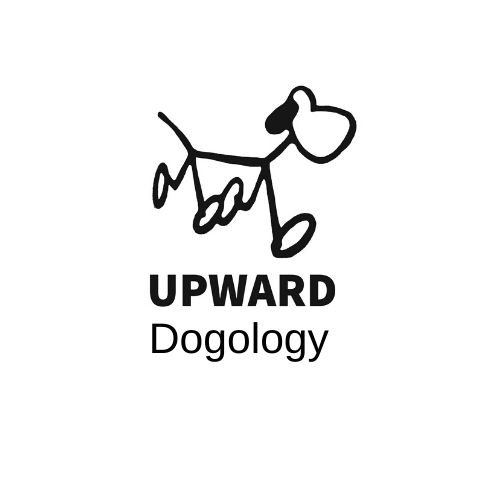
Dog Training Methods
The psychology driving methods, and brain development during lifestages, affect the success of methods. All non-aversive, evidence-based methods are effective, but they are not created equally - and that is a good thing!
As a guest on the podcast, “The Vet Blast”, the host, Dr. Adam Christman, asked why positive reinforcement training and counter conditioning are limiting. I replied, “They are limiting simply by virtue of their goals and principles combined with adolescent brain development.”
He then asked how it is different from Canine Cognitive Behavioral Therapy.
Conditioning methods use reinforcements to teach, encourage or discourage behavior through reactive reinforcements, or use associative elements to desensitize.
Cognitive Behavioral Therapy is designed to recognize emotional intelligence and harness cognitive skills driving behavior. CCBT establishes non-aversive exercises that reset the brain, prevent negative thought patterns, encourage processing, and induce decision-making, thus changing behavior.
Based on the principles governing methods, and brain development
occurring through life stages, it is proven that:
non-harmful reinforcement/reward-based methods are most effective with puppies (under 6 months)
Canine CBT is most effective with adolescent dogs (6-24 months) and adult dogs
Counter conditioning is less effective in general as it relies on desensitization and associative techniques to change perception of the stimuli.
Some trainers only apply positive reinforcements, commonly using treats, clicker, praise, or pats as the reward to encourage wanted behavior. Some trainers apply both sides of Operant Conditioning in a non-aversive manner, and are called “Balanced Trainers”. “Positive correction” and “positive punishment” are used to describe actions, for example, such as removing the positive object (such as a treat) to discourage the dog from doing an unwanted behavior. It is important to recognize that all these approaches or techniques are grounded in the same method.
Counter-conditioning addresses behaviors associated with aggression and anxiety with reinforcements combined with desensitization, and associative techniques. Desensitization provides a means of repeatedly safely exposing the pet to the stimulus at a level at or below which fear is likely to be exhibited. Counter-conditioning is used to change the pet’s attitude or emotional response to a stimulus by associating the positive element to the negative factor (scary man, dogs, vacuum, garbage pail) Counterconditioning can be time consuming and challenging to implement, requiring excessive patience and repetition, because, as with all conditioning methods, it is reactive in nature.
Response substitution, of which Impulse Control is associated with, is a technique in which the pet is taught, using reinforcement-based techniques, to replace the undesirable behavior with one that is desirable.
Conditioning Methods:
are reactive in nature. They REACT TO a behavior to encourage or discourage it. With many dogs, we need to pro-actively prevent the behavior without restraints or distractions or gimmicks, but by providing them with the skills and options that allow them to chose to not do the behavior because we change their perception.
are designed to teach “right from wrong” making them most effective when there are no pre-conceived thought patterns to change, which is common with puppies and with dogs who want to learn, and adhere to, expected behavior;
relies on contrived rewards, such as treats or toys or pats, and assumes the dog cares about these even in the most difficult of situations;
assumes dogs want to change their behavior and feel the need to learn from a human, when, in fact, many dogs have learned exactly what works in their favor and do not feel the need to change their behavior (which is why they ignore you or flip-you-the-bird).
Cognitive Behavioral Therapy:
Establishes skills, through exercises, that reset the brain and allow for decision making. CCBT changes perception, however, unlike Counter Conditioning, it does not focus on the stimuli, but rather, changes perception of 1) the positive person’s ability to read and understand them (pet parent, trainer, foster, shelter staff) 2) the need to respond or feel a certain way to achieve a goal, 3) their ability to make decisions.
We accomplish this by harnessing cognitive skills, the same cognitive skills that cause emotions that drive unwanted behavior. Instead of suppressing these emotions, we provide dogs with the ability to reset their brain, be comfortable with change, and make decisions, allowing dogs to choose to change their behavior. (Note - Decision making is different from providing options or positive direction)
Sound complicated? CBT is a formula that is scientifically proven to change perception to change behavior. UPWARD Dogology follows this formula in respect to dogs. It is logical, fear free, and effective. Learn more in season one of our podcast. Dog Training DisrUPted - UPWARD Dogology (buzzsprout.com)
“As a graduate of the American Behavioural College and Certified Behaviourist, I highly recommend UPWARD Dogology. Billie mentored me for 2 days and I learned more about how to address reactivity, aggression, and anxiety than in the entire ABC course. I also highly recommend reading her book.”
— Rachel Johnson, 2019

